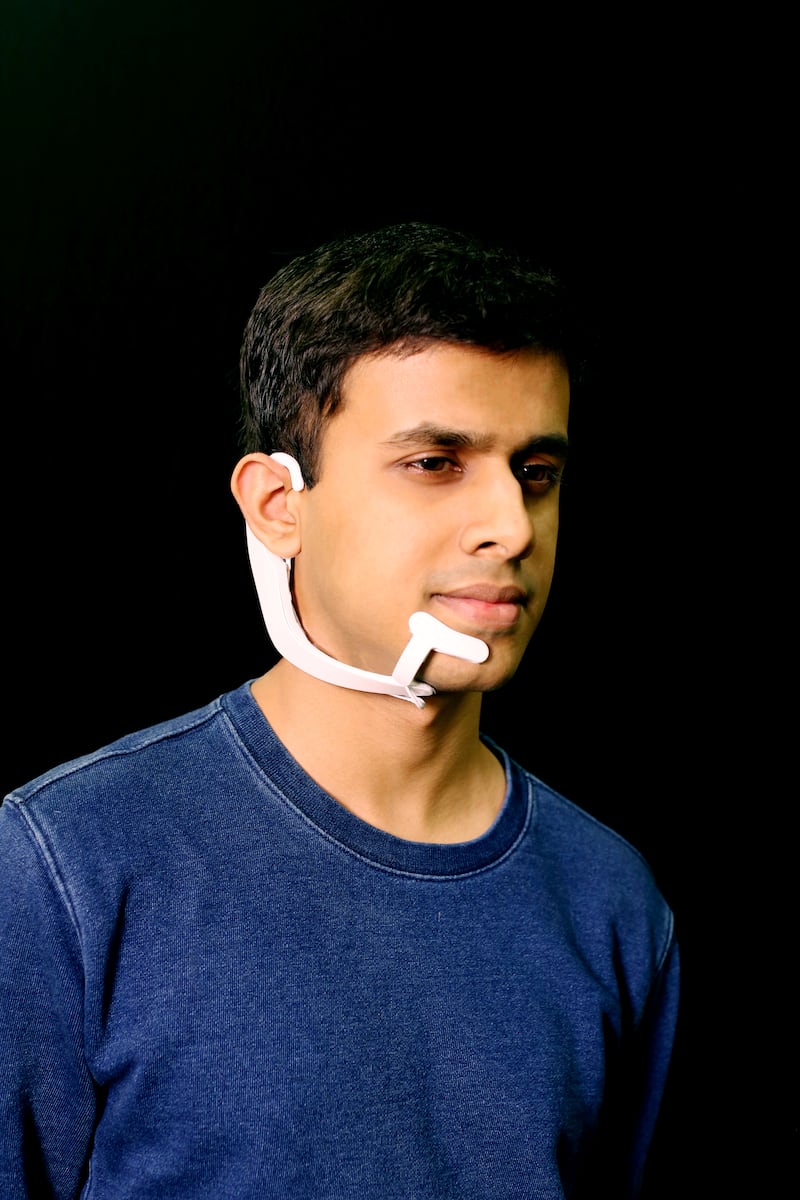A new headset created by university researchers can understand words the wearer says internally but does not speak aloud, enabling a form of mind-reading computing.
A team of researchers from MIT in the US have created the AlterEgo, a wearable which uses built-in electrodes to pick up meuromuscular signals in the jaw and face of the user that are prompted by internal verbalisation – or speaking “in your head”.
It is then able to translate these signals into words using artificial intelligence and respond to commands in the same way as current virtual assistants.
The team behind it said they wanted to create a computer system that could eventually converse with someone’s inner monologue, answering questions as they are asked.
The device also includes bone-conducting earphones, meaning it is able to answer non-vocal questions as it hears them, and feedback answers directly into a user’s ears.
So far in testing it has been used to give the time when asked, as well as help with basic maths calculations.
Arnav Kapur, the project leader and graduate student at MIT’s Media Lab, said: “The motivation for this was to build an IA device — an intelligence-augmentation device.

“Our idea was: Could we have a computing platform that’s more internal, that melds human and machine in some ways and that feels like an internal extension of our own cognition?”
Their research has now been published in a paper, and senior author Pattie Maes, who is also Kapur’s thesis adviser and a professor of media arts and sciences, said the device could cut down on “disruptive” smartphone use.
“We basically can’t live without our cellphones, our digital devices,” she said.
“But at the moment, the use of those devices is very disruptive. If I want to look something up that’s relevant to a conversation I’m having, I have to find my phone and type in the passcode and open an app and type in some search keyword, and the whole thing requires that I completely shift attention from my environment and the people that I’m with to the phone itself.
“So, my students and I have for a very long time been experimenting with new form factors and new types of experience that enable people to still benefit from all the wonderful knowledge and services that these devices give us, but do it in a way that lets them remain in the present.”
The team is now continuing to collect data using the headset, in the hope of being able to build applications that can understand a wider vocabulary.








